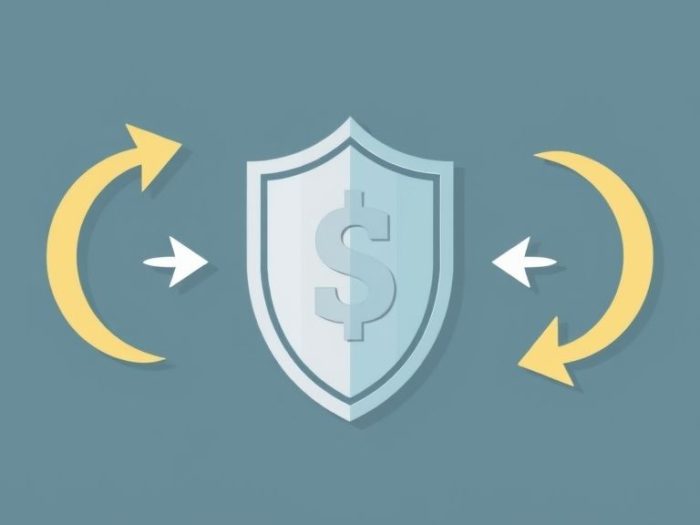Investing internationally exposes your portfolio to currency risk, which can significantly
impact your returns. Currency-hedged ETFs offer a way to mitigate this risk. This article
explores when to use currency-hedged ETFs and their role in an international investment
strategy.
Understanding Currency Risk
Currency risk is the risk that changes in exchange rates will negatively affect the value of
your investments. When you invest in foreign assets, your returns are influenced by both
the asset’s price movement and the fluctuation of the foreign currency against your home
currency.
What are Currency-Hedged ETFs?
Currency-hedged ETFs are exchange-traded funds that employ strategies to minimize or eliminate
the impact of currency fluctuations. They use financial instruments, such as forward contracts,
to offset changes in exchange rates.
How Currency Hedging Works in ETFs
The ETF manager typically uses forward contracts to lock in a specific exchange rate for
future currency conversions. This aims to neutralize the effect of currency movements on the
ETF’s value.
When to Use Currency-Hedged ETFs
Currency-hedged ETFs can be beneficial in certain situations:
1. Short-Term Investments with Currency Volatility Concerns
If you’re making a short-term investment in a foreign market and you anticipate significant
currency volatility, a currency-hedged ETF can provide more predictable returns.
2. Income-Focused Investing
For investors seeking a stable income stream from international dividends, currency hedging
can stabilize the income received in your home currency.
3. Defensive Portfolio Positioning
During periods of economic uncertainty or when you expect your home currency to strengthen,
currency-hedged ETFs can protect your international holdings.
4. Tactical Allocation
You can use currency-hedged ETFs to tactically increase or decrease your exposure to currency
risk based on your market outlook.
When to Avoid Currency-Hedged ETFs
Currency-hedged ETFs may not be necessary or even desirable in these situations:
1. Long-Term Investments with Currency Diversification
For long-term investors with a diversified international portfolio, currency fluctuations
may even out over time. Hedging costs can also reduce long-term returns.
2. Currency Speculation
If you’re actively trying to profit from currency movements, you would want to be exposed to
currency risk, not hedge it away.
3. Low Hedging Costs
Hedging involves costs. If the hedging costs are high, it may outweigh the benefits.
Important Considerations
- Expense Ratios: Currency-hedged ETFs may have higher expense ratios than non-hedged ETFs.
- Tracking Error: The hedging strategy may not perfectly eliminate currency risk.
- Yield Differences: Interest rate differentials between countries can impact the cost of hedging.
- Tax Implications: Understand the tax treatment of currency hedging gains or losses.
Conclusion
Currency-hedged ETFs can be a valuable tool for managing currency risk in international
investing. However, they are not always necessary and come with their own costs. Carefully
consider your investment goals, time horizon, and currency outlook to determine if
currency-hedged ETFs are appropriate for your portfolio.
Related Keywords
Currency-hedged ETFs, currency hedging, international investing, foreign currency, ETF
hedging, currency risk, global investing, international ETFs, hedging ETFs, currency
hedged funds.
Frequently Asked Questions (FAQ)
1. What is currency risk?
Currency risk, also known as exchange rate risk, is the risk that changes in
exchange rates will negatively affect the value of your investments.
2. How do currency fluctuations impact international investments?
If the foreign currency strengthens against your home currency, your returns are
boosted. If it weakens, your returns are reduced, or you may incur losses.
3. What are currency-hedged ETFs?
Currency-hedged ETFs are exchange-traded funds that use financial instruments
to minimize or eliminate the impact of currency fluctuations on their value.
4. How do currency-hedged ETFs work?
The ETF manager typically uses forward contracts to lock in a specific exchange
rate for future currency conversions, offsetting currency movements.
5. When are currency-hedged ETFs beneficial?
They are beneficial for short-term investments with currency volatility concerns,
income-focused investing, and defensive portfolio positioning.
6. When are currency-hedged ETFs not necessary or desirable?
They may not be necessary for long-term investments where currency fluctuations
may even out, or when you’re actively speculating on currency movements.
7. What are forward contracts?
Forward contracts are agreements to buy or sell a currency at a predetermined
exchange rate at a future date.
8. Are there any costs associated with currency hedging?
Yes, hedging involves costs, which can reduce your overall returns.
9. Are currency-hedged ETFs more or less expensive than non-hedged ETFs?
Currency-hedged ETFs may have higher expense ratios than non-hedged ETFs due to
the hedging costs.
10. Should I always use currency-hedged ETFs for international investing?
No, whether to use them depends on your investment goals, time horizon, and
outlook on currency movements. Carefully consider the pros and cons in your
specific situation.



